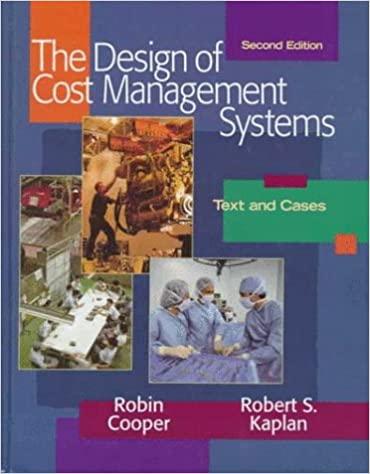please help

Luke Corporation produces a variety of products, each within their own division. Last year, the managers at Luke developed and began marketing a new chewing gum Bubbs, to sell in vending machines. The product, which sells for $5.60 per case, has not had the market success that managers expected and the company is considering dropping Bubbs. The product-line income statement for the past 12 months follows: $ 14,692,650 Revenue Costs Manufacturing costs Allocated corporate costs (5) Product line margin Allowance for tax (2x) Product-line profit (1oss) $ 14,443,895 734,633 15,178,528 (485,878) 97,175 (388,703) All products at Luke receive an allocation of corporate overhead costs, which is computed as 5 percent of product revenue. The 5 percent rate is computed based on the most recent year's corporate cost as a percentage of revenue Data on corporate costs and revenues for the past two years follow: Most recent year Previous year Corporate Revenue Corporate Overhead Costs $ 113,750,000 $ 5,687,500 76,900,000 Roy Andre, the product manager for Bubbs, is concerned about whether the product will be dropped by the company and has employed you as a financial consultant to help with some analysis. In addition to the information given, Mr. Andre provides you with the following data on product costs for Bubbs: Month 1 2 3 Cases 213, see 220,700 218,400 234,500 250,400 243,500 223,700 258,700 242, Bee 256,100 253, 7ee Production Costs $1,151,328 1,173,828 1,182,481 1,198,023 1,200,327 1,221,173 1,196,199 1,239,274 1,237,726 5 6 7 8 9 le 11 19 1,254,260 $ Product line margin Allowance for tax (20%) Product-line profit (loss) (485,878) 97,175 (388,703) $ All products at Luke receive an allocation of corporate overhead costs, which is computed as 5 percent of product revenue. The 5 percent rate is computed based on the most recent year's corporate cost as a percentage of revenue. Data on corporate costs and revenues for the past two years follow: Most recent year Previous year Corporate Revenue $113,750, eee 76,900,000 Corporate Overhead Costs $ 5,687,500 4,902,595 3 Roy O. Andre, the product manager for Bubbs, is concerned about whether the product will be dropped by the company and has employed you as a financial consultant to help with some analysis. In addition to the information given, Mr. Andre provides you with the following data on product costs for Bubbs: Month Cases Production Costs 1 213,500 $1,151,328 2 220,700 1,173,828 218,400 1,182,481 4 234,500 1,198,023 5 250,400 1,200,327 6 243,500 1,221,173 7 223,700 1,196,199 8 250,700 1,239,274 9 242,300 1,237,726 256,100 1,249,825 11 253,700 1,254, 260 262,700 1,284,951 1e 12 Required: a. Bunk Stores has requested a quote for a special order of Bubbs. This order would not be subject to any corporate allocation (and would not affect corporate costs). What is the minimum price Mr. Andre can offer Bunk without reducing profit any further? b. How many cases of Bubbs does Luke have to sell in order to break even on the product? c. Suppose Luke has a requirement that all products have to earn 5 percent of sales (after tax and corporate allocations) or they will be dropped. How many cases of Bubbs does Mr. Andre need to sell to avoid seeing Bubbs dropped? d. Assume all costs and prices will be the same in the next year. If Luke drops Bubbs, how much will Luke's profits increase or decrease? Assume that fixed production costs can be avoided if Bubbs is dropped









